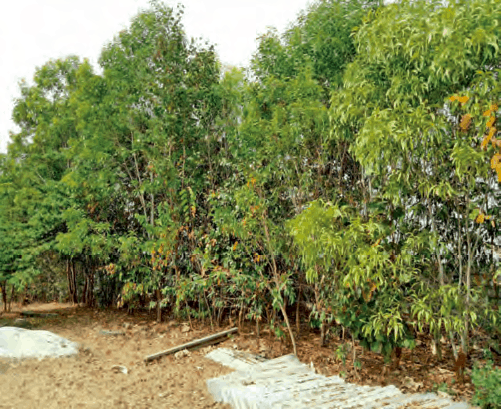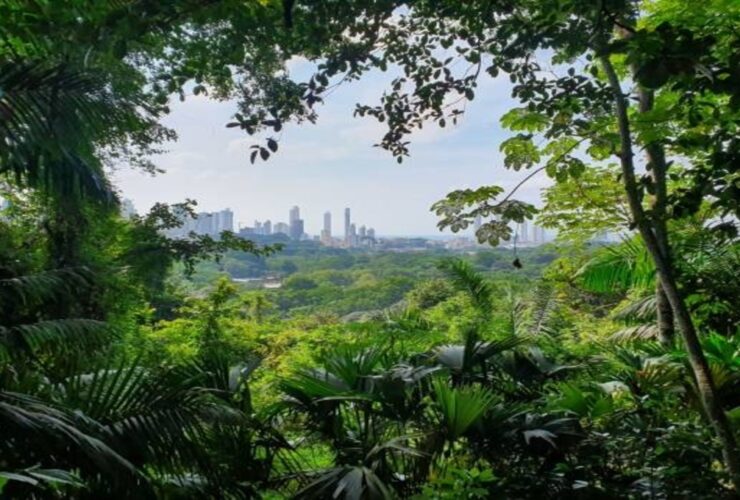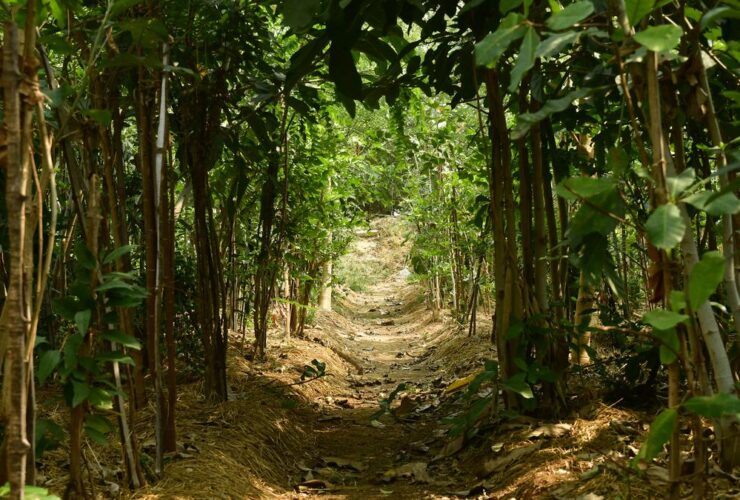In today’s rapidly urbanizing world, the expansion of cities often comes at the cost of green spaces and biodiversity. Urban areas are characterized by dense infrastructure, pollution, and limited natural landscapes. This has led to a growing need for innovative solutions to integrate nature back into city life. One such solution is the creation of mini forests using the Miyawaki method, a highly effective and transformative approach to afforestation that has gained significant attention for its ability to restore ecosystems, improve air quality, and enhance well-being in urban environments.
Mini forests created through the Miyawaki method are compact yet powerful ecosystems that deliver numerous benefits for urban neighborhoods. These small-scale forests are designed to thrive in the limited space available in cities, bringing nature back to the heart of urban life. By employing native species, high-density planting, and natural ecological processes, the Miyawaki method enables urban spaces to become vibrant, green sanctuaries that improve the quality of life and contribute to mental peace for city dwellers.
Benefits of Mini Forests in Urban Spaces and Neighborhoods
- Enhanced Air Quality and Pollution Reduction One of the most immediate benefits of mini forests in urban areas is the improvement in air quality. Trees naturally absorb carbon dioxide and release oxygen, making them essential for combating air pollution in cities. Mini forests can filter out harmful pollutants such as nitrogen dioxide, sulfur dioxide, and particulate matter, improving the air quality for those living in surrounding neighborhoods. This contributes to better respiratory health and reduces the impact of urban pollution on vulnerable populations, including children and the elderly.
- Thermal Regulation and Urban Heat Island Effect Cities often experience higher temperatures than rural areas due to the “urban heat island effect,” where concrete, asphalt, and buildings trap heat. Mini forests, by providing dense canopy cover, help cool the surrounding environment by providing shade and releasing moisture through a process called transpiration. This cooling effect reduces the temperature in urban areas, making them more comfortable, especially during hot summer months. Lower temperatures improve comfort and reduce the need for air conditioning, leading to energy savings and a reduction in overall carbon emissions.
- Biodiversity Restoration Urban environments often lack biodiversity, with few natural habitats left for wildlife. By planting a diverse mix of native species, Miyawaki mini forests provide essential habitats for birds, insects, and small mammals. These mini ecosystems become refuges for pollinators like bees and butterflies, which play crucial roles in maintaining biodiversity. Over time, the forest grows into a rich, self-sustaining ecosystem that promotes the return of local wildlife, contributing to the broader environmental health of the urban area.
- Soil and Water Conservation Mini forests play a vital role in improving soil health and preventing erosion. The dense root systems of the trees in these forests stabilize the soil, preventing degradation and reducing surface runoff. This is particularly important in urban areas where soil quality is often compromised due to construction, pollution, or compaction. Additionally, the ability of the mini forest to absorb and retain water helps mitigate flooding, especially in areas with inadequate drainage systems.
- Reduction of Noise Pollution Urban noise is a significant concern for mental well-being, with studies linking prolonged exposure to high noise levels to stress, sleep disturbances, and other health problems. Mini forests act as natural sound barriers, reducing noise pollution by absorbing sound and acting as buffers between noisy roads or industrial areas and residential neighborhoods. This makes the surrounding area quieter, more peaceful, and conducive to relaxation.
Improving Mental Well-being and Quality of Life
In addition to the ecological benefits, Miyawaki mini forests have a profound impact on the mental and emotional health of individuals who live and work in urban spaces. Here’s how they contribute to a better quality of life:
- Stress Reduction and Mental Peace Urban environments are often associated with high stress, constant noise, and a fast-paced lifestyle. Natural spaces like mini forests provide a contrast to the concrete jungle, offering an escape for individuals seeking relaxation and calm. Studies have shown that spending time in green spaces reduces levels of cortisol (the stress hormone) and helps to lower blood pressure. The serene environment created by trees, birdsong, and natural beauty encourages mindfulness, promoting a sense of peace and mental clarity.
- Increased Opportunities for Physical Activity The presence of green spaces in urban areas provides residents with opportunities to engage in outdoor activities such as walking, jogging, yoga, and meditation. Having a nearby mini forest allows individuals to connect with nature, enjoy the outdoors, and incorporate more physical movement into their daily routines. This not only improves physical health but also boosts mood and energy levels, enhancing overall well-being.
- Community Engagement and Social Cohesion Mini forests in urban neighborhoods can serve as communal spaces where residents come together for activities such as tree planting, nature walks, or environmental education. This fosters a sense of community, bringing people closer and encouraging collective action towards environmental conservation. Green spaces also provide venues for social interaction, fostering a sense of belonging and enhancing social cohesion, which is essential for mental well-being.
- Aesthetic Value and Visual Appeal The aesthetic value of green spaces in urban environments cannot be overstated. The presence of lush, green mini forests creates a visually appealing environment that enhances the beauty of neighborhoods. The vibrant colors, varied textures, and seasonal changes in the forest provide a visual respite from the monotony of concrete and steel. This aesthetic improvement not only makes urban spaces more attractive but also positively affects the mood and mental health of individuals who interact with these spaces.
- Promoting Connection with Nature In an increasingly digital and urbanized world, people often feel disconnected from nature. Miyawaki mini forests provide an opportunity to reconnect with the natural world, even in the heart of a city. This connection with nature has been linked to improved mental health outcomes, as nature encourages creativity, reduces anxiety, and helps people feel grounded. For children, these forests offer valuable learning experiences, fostering an appreciation for the environment and helping to develop eco-conscious values.
Conclusion
Miyawaki mini forests offer a revolutionary way to green our cities and urban neighborhoods. By transforming underutilized spaces into vibrant, biodiverse ecosystems, these mini forests not only improve the environment but also provide a multitude of benefits that enhance the overall quality of life for residents. The positive impact on air quality, noise reduction, climate regulation, and biodiversity is clear, but perhaps even more important are the mental health benefits these forests bring. Through their beauty, tranquility, and capacity to foster social connections, mini forests serve as sanctuaries of peace and well-being in the busy, fast-paced lives of urban dwellers.
As we continue to face the challenges of urbanization, the Miyawaki method provides an innovative solution to creating healthier, more sustainable cities. By planting mini forests, we not only create a greener future but also cultivate happier, healthier communities — one tree at a time.



